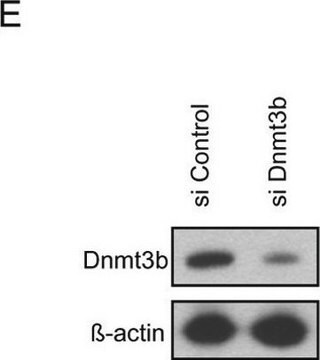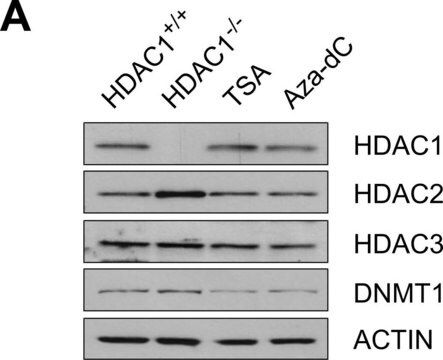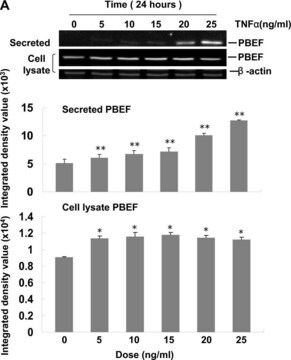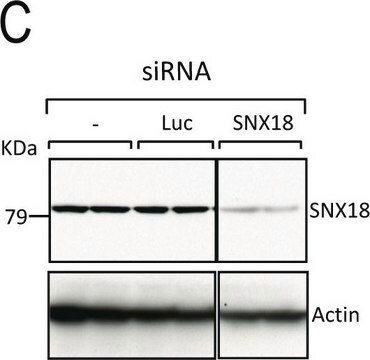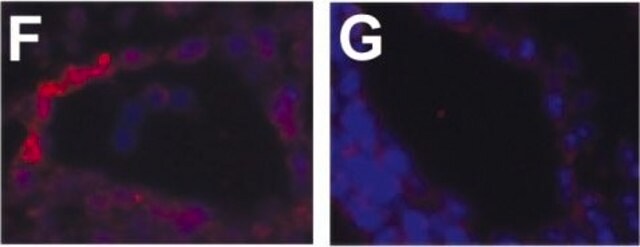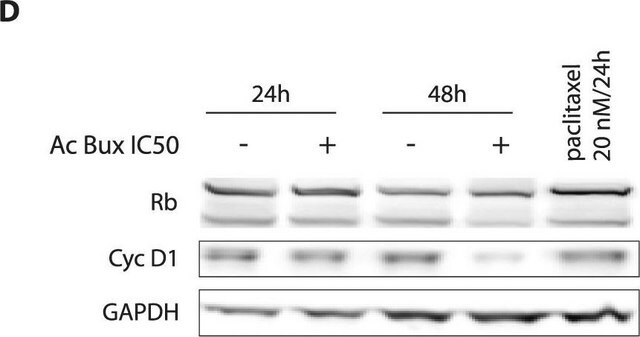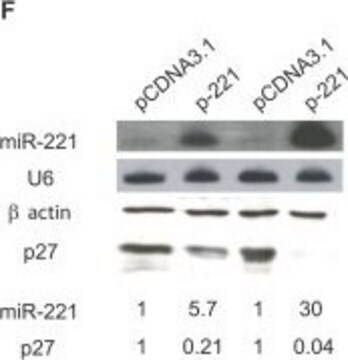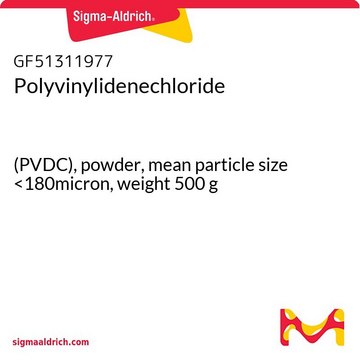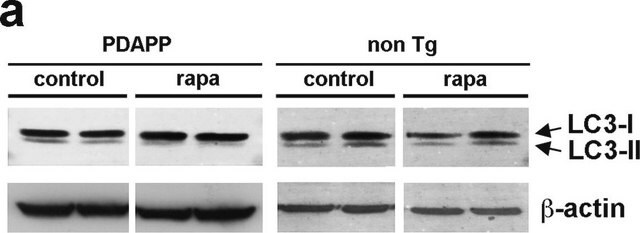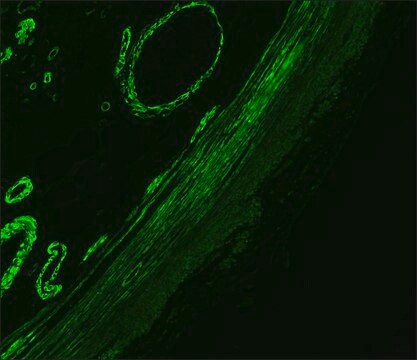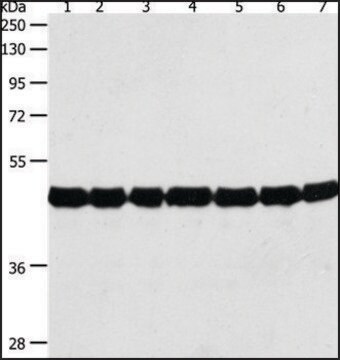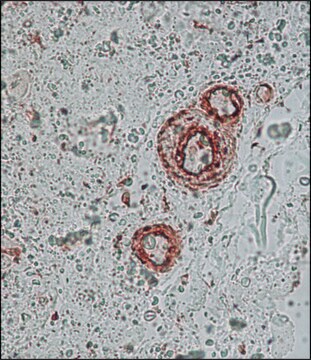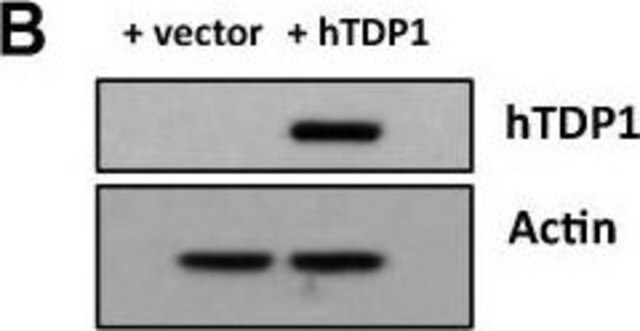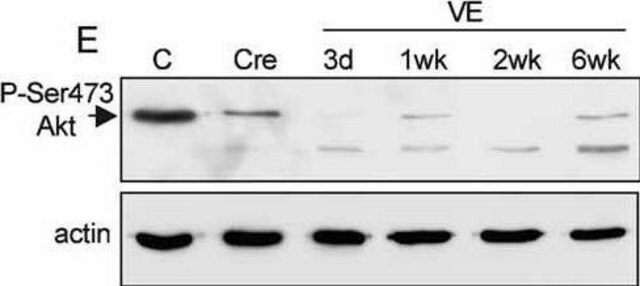A5441
Anti-β-Actin (ACTB) Antibody
mouse monoclonal, AC-15
Synonim(y):
Przeciwciało monoklonalne przeciwko beta-aktynie
About This Item
Polecane produkty
Nazwa produktu
Monoclonal Anti-β-Actin antibody produced in mouse, clone AC-15, ascites fluid
pochodzenie biologiczne
mouse
białko sprzężone
unconjugated
forma przeciwciała
ascites fluid
rodzaj przeciwciała
primary antibodies
klon
AC-15, monoclonal
masa cząsteczkowa
antigen 42 kDa
zawiera
15 mM sodium azide
reaktywność gatunkowa
sheep, carp, feline, chicken, rat, mouse, Hirudo medicinalis, rabbit, canine, pig, human, bovine, guinea pig
spodziewany brak reakcji z
Dictyostelium discoideum
metody
immunohistochemistry (formalin-fixed, paraffin-embedded sections): suitable
indirect ELISA: suitable
indirect immunofluorescence: 1:1,000-1:2,000 using cultured human or chicken fibroblasts
western blot: 1:5,000-1:10,000 using cultured human or chicken fibroblast cell extracts
izotyp
IgG1
numer dostępu UniProt
Zastosowanie
research pathology
Warunki transportu
dry ice
temp. przechowywania
−20°C
docelowa modyfikacja potranslacyjna
unmodified
informacje o genach
human ... ACTB(60)
mouse ... Actb(11461)
rat ... Actb(81822)
Szukasz podobnych produktów? Odwiedź Przewodnik dotyczący porównywania produktów
Opis ogólny
Specyficzność
Immunogen
Zastosowanie
- in immunofluorescence staining
- in immunoblotting
- in immunohistochemistry
- as a control for protein arrays
Działania biochem./fizjol.
Postać fizyczna
Inne uwagi
Oświadczenie o zrzeczeniu się odpowiedzialności
Nie możesz znaleźć właściwego produktu?
Wypróbuj nasz Narzędzie selektora produktów.
polecane
Kod klasy składowania
10 - Combustible liquids
Klasa zagrożenia wodnego (WGK)
WGK 1
Temperatura zapłonu (°F)
Not applicable
Temperatura zapłonu (°C)
Not applicable
Wybierz jedną z najnowszych wersji:
Certyfikaty analizy (CoA)
Nie widzisz odpowiedniej wersji?
Jeśli potrzebujesz konkretnej wersji, możesz wyszukać konkretny certyfikat według numeru partii lub serii.
Masz już ten produkt?
Dokumenty związane z niedawno zakupionymi produktami zostały zamieszczone w Bibliotece dokumentów.
Klienci oglądali również te produkty
Produkty
Loading controls in western blotting application.
Kontrole ładowania w aplikacji western blotting.
Przeciwciała łączą się z określonymi antygenami w celu wytworzenia ekskluzywnego kompleksu przeciwciało-antygen. Dowiedz się więcej o naturze tego wiązania i jego wykorzystaniu jako znacznika molekularnego w badaniach.
Poznaj różnice między przeciwciałami monoklonalnymi i poliklonalnymi, w tym sposób generowania przeciwciał, numery klonów i formaty przeciwciał.
Protokoły
Protokół Western blot szczegółowo opisuje przenoszenie białek z żeli na nitrocelulozę, co ma kluczowe znaczenie dla procedur immunoblottingu w badaniach naukowych.
Nasz zespół naukowców ma doświadczenie we wszystkich obszarach badań, w tym w naukach przyrodniczych, materiałoznawstwie, syntezie chemicznej, chromatografii, analityce i wielu innych dziedzinach.
Skontaktuj się z zespołem ds. pomocy technicznej